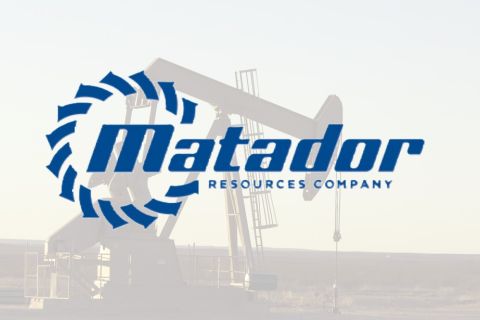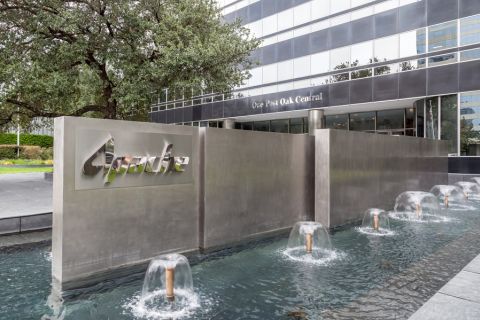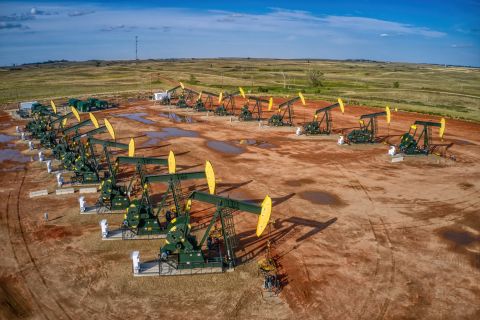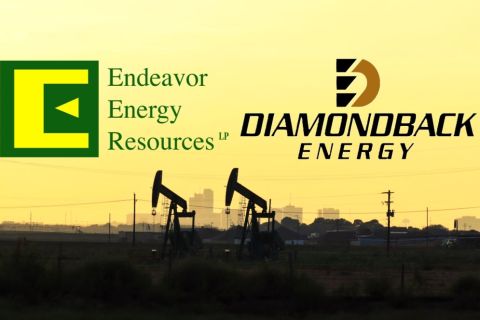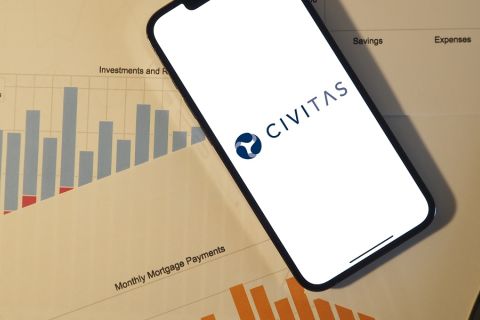At the closing table of two major deals in the past few months, five-year-old Vanguard Natural Resources LLC has vaulted onto the distribution-paying E&P field. It has a new $2.1-billion-plus enterprise value, less than $650 million of long-term debt, a $1.5-billion credit facility and proved reserves of 73 million barrels of oil equivalent (BOE)—roughly triple that of a year earlier.
In December, it acquired the other 54% it didn’t already own of Encore Energy Partners LP, another distribution-paying E&P, bringing all of Encore’s assets onto its own books and eliminating dual management costs. In March, it divested its nonoperated gas-producing assets in Kentucky and Tennessee to Vinland Energy LLC, a company owned by Majeed Nami, a Vanguard founder. The 1.9 million Vanguard common units Nami paid for the properties were retired, resulting in an exit from Appalachian gas for Vanguard and a reduction in unit competition for Vanguard distributions.
Also, in January, it sold some 5 million units, raising roughly $135 million to pay some term-loan and revolver debt. And, its new credit facility carries a lower interest rate, paring Vanguard’s cost of bank debt a half-percent.
Since its IPO in October 2007, Vanguard units (NYSE: VNR) are up more than 40%. Quarterly distributions paid per unit have totaled $83.35 million, including a record 58.75 cents this February. In just the past year, production has grown threefold to 13,400 BOE per day, 71% liquids, of which 61% is oil.
Its 2011 revenue more than tripled from 2010 to $313 million. John Cusick, energy equity-research analyst for Wunderlich Securities Inc., says, “We believe Vanguard is an attractive investment due to its distribution growth profile, total return potential, its limited exposure to commodity prices due to its hedging program, and the transformative nature of the Encore…acquisition.” In early March, he had a Buy rating on the units and a $33 price target.
Oil and Gas Investor visited recently with Vanguard’s founding officers—Scott Smith, president and chief executive, and Richard Robert, executive vice president and chief financial officer—to discuss the company’s growing liquids profile, its greater scale, and its plans for growing cash flow—thus, distributions—in the coming year.
Investor Having brought Encore into the fold, will your distributions grow?

“Our position on selling assets is that it’s opportunity driven,” says Scott Smith, president and chief executive.
Smith Certainly a lot of G&A costs associated with running two companies are eliminated, and we continue to operate at a high distribution coverage ratio, so we should have some flexibility in our distribution policy going forward.
Investor You bought Denbury Resources Inc.’s 46% interest in Encore in 2010 with cash and 3.14 million Vanguard units. Was buying the rest of Encore not doable at the time?
Smith It definitely was not. We had to approach it in a two-step manner, because the merger required the approvals of independent conflict committees, preparing a joint proxy statement that had to be approved by the SEC, and a unitholder vote to approve the transaction. All of these items could never have been completed in the time from the initial acceptance of our offer in October 2010 through the closing at the end of December 2010.
The second step was going to take place when market conditions allowed, which was last spring. It was something that obviously made sense, but it wasn’t something we would rush out and do because, again, in a unit exchange, we weren’t going to do a deal that was dilutive to our unitholders. Last spring, the relative values of the companies’ unit prices were at a point where it made economic sense for both sets of unitholders to combine the two companies.
Investor Coming out of the deal, your portfolio of liquids has increased greatly.
Smith It was a very long process, but there are so many benefits attributable to that transaction. Foremost, we are a much larger, oilier, higher-percentage PDP (proved developed producing reserves) company. It was truly a transformational event. When you’re trying to do an acquisition, what better asset to try to buy but another MLP (master limited partnership) that does the same thing you do and has a very complementary asset base?

Distributions have grown steadily, including a record 58.75 cents in February 2012.
Investor What drove the divestment of your legacy Appalachian gas assets to Vinland?
Smith The assets were performing as expected, being very-low-decline assets, but we didn’t operate them, and we felt there were limited options for growth in terms of acquisitions. Mike Nami had the desire to expand in the area, as he had recently completed an acquisition of nearby properties, and there were obvious synergies that could be accomplished by merging the operations of the two sets of assets. Under this scenario, it made sense for us to negotiate a transaction that, in the end, provided a good value for our unitholders after taking into account the units we are retiring and the distributions that go with those units.
Robert We didn’t think the Appalachian area was going to create a lot of value, and we had a buyer who was willing to put a nice price on those properties. There are a lot of synergies he can create out of these assets with the other assets he has there.
Investor Is this a complete exit from Vanguard for Nami?

Says Richard Robert, executive vice president and chief financial officer, “Our mantra is that we drill enough to maintain our cash flow, and we acquire properties to increase our cash flow and distributions.”
Robert He continues to hold about 400,000 units in total, which is less than 1% of outstanding units. It is essentially a full exit.
Investor Vanguard was created as an LLC without a general partner (GP) and related incentive distribution rights or IDRs. For the time, that was bold. Why the simple structure?
Robert It was important to us to have a structure that is unitholder friendly. If you have a high split through an IDR, acquisitions are not as accretive. The business is different. When a GP is scraping off 25% or more of the cash flow, acquisitions are not going to have as great an impact.
It’s taken a long time, but now what you’re seeing among the midstream MLPs is that a lot of the GPs have been collapsed into the MLP, because the GP sponsor has realized that the only way the MLP can be competitive in the acquisition market and grow its distributions is if it doesn’t have that disproportionate cash split going to the general partner for running the business.
Investor You’re in some nice ZIP codes—South Texas, the Permian, the Bakken. What is your capex split by area for 2012?
Smith We’ll spend about 40% in the Permian, and about 50% in the Big Horn Basin and the Williston. The rest is kind of spread out—South Texas, Mississippi. Development drilling in the Bakken is where a lot of our 2012 capex will be.
Investor You bought into the Olmos formation in South Texas before the Eagle Ford play developed. Was that just luck?
Smith South Texas is not really a horizontal play for us. We don’t have Eagle Ford rights. We have rights to the Olmos formation, which is above the Eagle Ford, and to anything up-hole. Those acquisitions were mostly of mature, vertical Olmos production, so we’re not exposed to any of the horizontal activity there.
Robert It is liquids-rich production, which makes it attractive from an economic perspective. Fortunately, for us, we have a lot of oily prospects where the rates of return are simply better than what you can expect from dry gas or even liquids-rich gas in South Texas.
Smith When we did those transactions (with Lewis Energy Group LP in 2008 and 2009), the Eagle Ford was only becoming understood. But we wouldn’t have participated in it anyway; the wells cost too much for us. We only have so many dollars to redeploy, and we’re not going to get into a big exploration or development program that absorbs all of our cash flow.
Robert That’s the big difference between us and a typical C-corp. We spend very little of our cash flow on drilling. We can’t because we have to distribute our cash flow to our investors. Our mantra is that we drill enough to maintain our cash flow, and we acquire properties to increase our cash flow and distributions.

Vanguard will spend about 40% of its 2012 capex in the Permian, and about 50% in the Big Horn Basin and the Williston.
Investor Are producers coming to you, asking to drill where you have stacked pay?
Smith We will look at anything that creates value, and we have had a lot of that opportunity. For example, we made a small acquisition in the Permian last year that included a stripper well in Gaines County (Texas). We started getting all of these inbounds from the offset operators wanting to buy the well. We didn’t sell it; instead, we plan to drill some wells directly offsetting some newer wells that have been drilled across the lease line. We are participating in the first well right now, and plan on drilling two additional wells at 100% working interest later this year. These aren’t big wells; they’re 7,500 feet total depth and make 75 barrels a day, leveling off to about 30 barrels a day.
That’s an example of a small deal. We’ve had a lot of that. We’ll take it when we get it, if it makes sense. Where we’re seeing more of it is in the Bakken, where we have a bigger footprint. We participated in four wells during 2011 and hope to participate in six to eight in 2012.
Investor You have 91% of your oil hedged at between $80 and $103 this year, 84% at between $88 and $106 next year, and 65% between $89 and $117. That’s nice pricing.
Robert It’s a function of the commodity price at the time we made acquisitions. And, we’re a little different there: We lock in the strip price immediately upon signing the PSA (purchase-and-sale agreement). We don’t wait until clos- ing because, with the volatility in the commodity markets, your economics can change dramatically from the time you sign the PSA and close the transaction.
During the past eight months, we’ve also really focused on optimizing our hedge book and we layered in a lot of new hedges focused on our existing production and not just acquisitions. The result is a pretty nice book with a good floor price for oil that still allows us to get some upside.
Investor For gas, your hedges are strong as well—better than $5 a million Btu into 2014.
Robert On the gas side, we just wanted to lock in a price. We didn’t expect there to be much upside. So we were happy to just get a fixed price. Obviously, a little over $5 is very attractive today.
Investor Is it more or less difficult to find acquisitions at an appropriate price today?
Smith It is slightly more difficult because there are more upstream MLPs in the game today than when we started in 2007. But, a lot of the upstream MLPs are PE (private equity)-backed or affiliated with other entities. Their focus is going to be on drop downs. They aren’t going to be as active in the acquisition market because they were created to be vehicles for drop-down assets at good valuations from their PE sponsors.
But, today, we have more staff to look at deals. When we started, we had four employees and now we have 110. We have land people and a half-dozen engineers. We also have a director of acquisitions with a lot of experience in the A&D market. We can digest a lot more opportunities than we ever have in the past, plus we have a history of closing acquisitions quickly, which should appeal to sellers.
It doesn’t behoove us to drag the PSA process out and hope to try to renegotiate the price. It’s not our MO. We hedge it not within weeks but within days of making a deal. We don’t want to take price risk; as we have seen recently, commodity prices can move pretty quickly. There are lots of examples of where a buyer dragged the closing process out a long time and, meanwhile, the price eroded and eroded, so they eventually closed at economics that were far different than what they thought they were getting initially.
Robert We’re seeing bigger deals now because of our size and scale as a result of the Encore transaction and because we have a lot more credibility in the acquisition market. The larger you are, the more willing banks are to lend to you. When we started, we had two banks in our credit facility; we have 20 banks today, all very willing to support us in our growth efforts. From that perspective, it’s gotten easier.
Investor Would you divest any other assets in your portfolio in the coming year or two?
Smith Our position on selling assets is that it’s opportunity driven. In five years, we have sold a couple of properties when someone came in and just offered a much bigger number than we ever had on it. But we are a cash-flow company and not looking to sell. It may make sense to take things to auction at some point. But that takes a lot of time and effort and we run very lean, staff-wise.
I’m not going to take our engineering and land people, who are busy working on the growth of the company, off potential acquisition targets to do something where we’re going to get a few bucks for some scraps. If someone approaches us and it’s beneficial to us, then we’ll sell it; if not, then it’s not part of our business. We’re in the acquisition business, not the divestiture business.
Investor What does Wall Street overlook about Vanguard?
Smith We are the second-most (to Pioneer Southwest Partners LP) liquids-focused, mature, upstream MLP among those of more than $500 million in enterprise value. There is a perception that we are gassy, and that’s probably due to our Appalachian roots. But, over 90% of our revenue this year will be derived from liquids. That’s the story we need to get out. There is a disconnect in terms of where we trade and where those that are liquids-focused trade.
Robert People don’t understand that the last nine of 10 transactions we’ve done have been liquids based. We went from being a gas company to an oil company very quickly, so it hasn’t percolated through the market at this point.
Investor What else does Wall Street miss?
Smith We started small, but we’ve had a pretty nice growth track. We don’t have a sponsor. We don’t come from a PE-backed deal. We are basically a stand-alone. We don’t wear multiple management hats. We’ve grown and it’s been profitable growth, and that’s evident by our distribution growth. We’re not getting big just to get bigger.
And, we’ve had a transformation we crafted in the past five years from being a nonoperated gas producer to being an operated liquids producer. We operate 80% of our value today, and we’re in a great position to continue doing this.
Robert For investors that like yield, here’s a story where you get consistently growing cash flow with a nice growth kicker. Our distributions have grown during each of the past five quarters, and our high distribution coverage should indicate to our investors that it is a very sustainable distribution.
Recommended Reading
Matador Bolts On Additional Interest from Advance Energy Partners
2024-02-27 - Matador Resources carved out additional mineral and royalty interests on the acreage it acquired from Advance Energy Partners for $1.6 billion last year.
APA Closes $4.5B Callon Deal, Deepening Permian Roots
2024-04-01 - About two-thirds of Apache’s daily production will come from the Permian Basin after APA Corp. completed its $4.5 billion takeout of Callon Petroleum.
Is Grayson Mill the Next Bakken Domino to Fall After Chevron-Hess?
2024-01-31 - As E&Ps look to bulk up outside of the Permian Basin, EnCap-backed Bakken player Grayson Mill Energy is reportedly exploring a sale valued around $5 billion.
Analysts: Diamondback-Endeavor Deal Creates New Permian Super Independent
2024-02-12 - The tie-up between Diamondback Energy and Endeavor Energy—two of the Permian’s top oil producers—is expected to create a new “super-independent” E&P with a market value north of $50 billion.
Civitas, Prioritizing Permian, Jettisons Non-core Colorado Assets
2024-02-27 - After plowing nearly $7 billion into Permian Basin M&A last year, Civitas Resources is selling off non-core acreage from its legacy position in Colorado as part of a $300 million divestiture goal.

